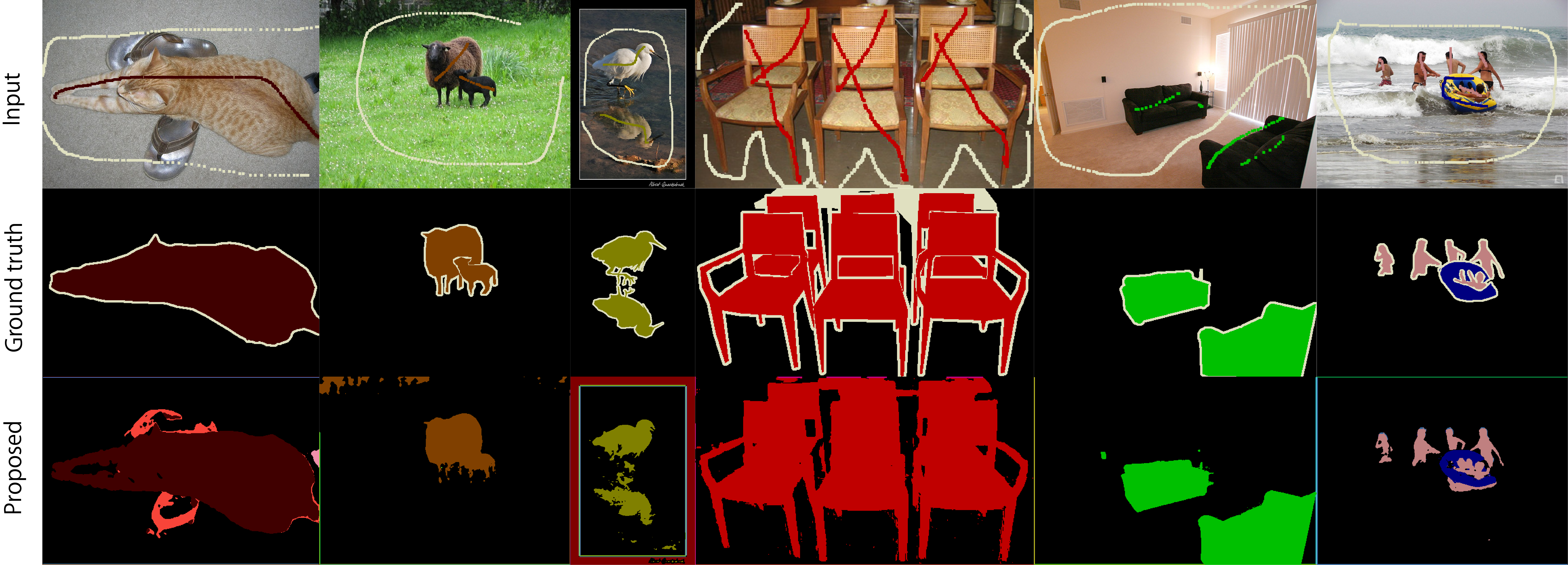IEEE Transactions on Image Processing
Unsupervised Learning of Image Segmentation Based on Differentiable Feature Clustering
 *W. Kim and A. Kanezaki contributed equally to this work.
*W. Kim and A. Kanezaki contributed equally to this work.
Abstract
The usage of convolutional neural networks (CNNs) for unsupervised image segmentation was investigated in this study. Similar to supervised image segmentation, the proposed CNN assigns labels to pixels that denote the cluster to which the pixel belongs. In unsupervised image segmentation, however, no training images or ground truth labels of pixels are specified beforehand. Therefore, once a target image is input, the pixel labels and feature representations are jointly optimized, and their parameters are updated by the gradient descent. In the proposed approach, label prediction and network parameter learning are alternately iterated to meet the following criteria: (a) pixels of similar features should be assigned the same label, (b) spatially continuous pixels should be assigned the same label, and (c) the number of unique labels should be large. Although these criteria are incompatible, the proposed approach minimizes the combination of similarity loss and spatial continuity loss to find a plausible solution of label assignment that balances the aforementioned criteria well. The contributions of this study are four-fold. First, we propose a novel end-to-end network of unsupervised image segmentation that consists of normalization and an argmax function for differentiable clustering. Second, we introduce a spatial continuity loss function that mitigates the limitations of fixed segment boundaries possessed by previous work. Third, we present an extension of the proposed method for segmentation with scribbles as user input, which showed better accuracy than existing methods while maintaining efficiency. Finally, we introduce another extension of the proposed method: unseen image segmentation by using networks pre-trained with a few reference images without re-training the networks. The effectiveness of the proposed approach was examined on several benchmark datasets of image segmentation.
Publications
- Wonjik Kim*, Asako Kanezaki*, and Masayuki Tanaka.
"Unsupervised Learning of Image Segmentation Based on Differentiable Feature Clustering."
IEEE Transactions on Image Processing, accepted, 2020.
*equal contributions
arXiv - Asako Kanezaki.
"Unsupervised Image Segmentation by Backpropagation."
IEEE International Conference on Acoustics, Speech and Signal Processing (ICASSP), pp.1543-1547, 2018.
PDF
Code
BibTeX
@article{kim2020_unsupervised_segmentation,
title={Unsupervised Learning of Image Segmentation Based on Differentiable Feature Clustering},
author={Wonjik Kim and Asako Kanezaki and Masayuki Tanaka},
journal={IEEE Transactions on Image Processing},
year={2020},}
@inproceedings{kanezaki2018_unsupervised_segmentation,
title={Unsupervised Image Segmentation by Backpropagation},
author={Asako Kanezaki},
booktitle={Proceedings of IEEE International Conference on Acoustics, Speech, and Signal Processing (ICASSP)},
year={2018},}